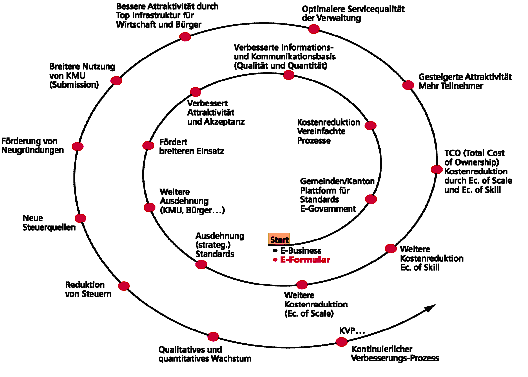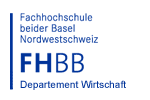Supporting procurement processes and improving customer proximity at Kantonale Drucksachen- und Materialzentrale Zürich (kdmz)
Kantonale Drucksachen- und Materialzentrale Zürich ("kdmz") is the central point of procurement for local authorities, public offices and authorised individuals in the Canton of Zürich. This case study shows how the provision of local government with indirect goods can be efficiently and effectively executed using principles that apply to the private sector. Integration is ensured by using the same system for the back office (ERP system) and the front office (e-shop).
1. The company
Background:
Kantonale Drucksachen- und Materialzentrale Zürich (kdmz) was founded in 1903 and since 1st January 1997 has been a department of the Canton of Zürich Tax Office. As such it has cross-sectional and intermediary responsibilities and is the central procurement and service point for the cantonal administration and other authorised agencies of the Canton of Zürich. In the B2B scheme of things, this service provider can be termed a procurement service provider [Schubert et al. 2002, p. 6 ].
The company employs 49 people and generated turnover of around CHF 46 million in 2002.
Industry, product and target group:
The range comprises the four product lines Expendable Items (office supplies and cleaning agents), Printed Matter (literature, publishing, communication aids from the kdmz print shop), investment goods (IT equipment, copiers etc.) and services (IT and management consulting). The core range covers several thousand articles. In addition, customers are increasingly being offered extra services such as consulting, warehousing, dispatch, disposal of special products and courier services. As another core competence, kdmz operates its own production facilities (incl. a state-of-the-art digital printing office). Around 1,500 official forms, approx. 500 publications and 2,500 articles of office supplies and cleaning agents make up the kdmz range.
In 2002, around 91,000 orders with some 2,500 internal and 49,000 external customers were processed. kdmz offers its customers three different login alternatives:
- 1st and most frequent model: “Login as registered user” with master data storage. These customers are authorised to procure services from all four product lines and have the choice of activating these services and, if required, have them booked from their cost centre in the state exchequer.
- 2nd model: “Qualified Guest” such as trust companies. Access with this type is the same as with “Registered Customer”. The customising function in the shop gives customers access to the master data and a limited range of published products (forms, publications and collections of legal texts) for buying via invoice. The area of office supplies remains inactive for this log-in.
- 3rd model: "Log-in as guest". This log-in applies to one session only and does not provide access to user master data. It was conceived primarily with members of the public in mind who only occasionally order through kdmz, i.e. they do not have their own range.
Half of all orders processed are for forms and publications. By mid-2003, 2,500 internal and external customers were using the e-shop. This number is set to continue to rise in the future.
Corporate vision:
The kdmz corporate vision:
2. E-business strategy
Importance of e-business in the corporate strategy:
As part of its e-government strategy, the Canton of Zürich proposes to offer various administrative services via the internet. Information input in this way should also be processed electronically. This serves the following aims:
- To improve public service
- To break down the distance between the Canton of Zürich and its customers within and outside the public administration
- To speed up internal procedures and processes
- To use the latest communications technologies to create a modern, future-facing image for the Canton of Zürich and thus raise the location's appeal
Within these goals, the task of operating an e-procurement solution for Zürich's administrative units also falls to kdmz.
E-business application areas in the company:
By 1999, with the launch of an e-shop, kdmz had already laid the foundations for an extremely efficient platform for procuring office supplies and systems. Since then, the services that kdmz offers its customers via e-business have been constantly expanded. kdmz can be seen as exemplary for further e-government plans in the Canton of Zürich.
[Translation (from center): E-business form, Municipality-/canton-level platform for e-government standards, Reduced costs through simplified processes, Improved information and communication basis (quality and quantity), Enhanced attractiveness and acceptance, Promotes more widespread use, Extended reach (SMEs, citizens), Extended reach (strategic)standards, Further reduction in costs (economies of scale), Reduction in costs (economies of skill), Reduced costs through TCO (total cost of wonership) through economies of scale and economies of skill, Raised attractiveness – more users, optimised service quality w.r.t. administration, Improved attractiveness through top infrastructure for business and citizens, Broader use by SMEs, Sponsors new entreprises, New tax sources, Tax reductions, Qualititive and quanititive growth, Continuous enhancement process…]
Partners:
ERP supplier/Existing IT partner
Opacc Software AG (Kriens), founded in 1988, develops standard applications that are deployed at kdmz for in-house processing (ERP system) and E-Business processing. Opacc was the project partner for the system described here. Based on the procurement analysis and the optimisation of core processes for process-orientated operation, the concept was drawn up with kdmz and subsequently realised as a turnkey solution.
The business association between kdmz and Opacc Software AG came about at the beginning of 1999 after an official call for bids to replace the IBM system then in use at kdmz.
ABRAXAS is kdmz's current internet service provider. The application service provider for the web solution is Opacc Software AG and is linked via ABRAXAS.
Business partners
kdmz's three suppliers can be mentioned at this point as model business partners: Waser + Co., ALSO, ARP Datacon. Agreements exist with all key suppliers to regulate the use of supplier catalogues, storage of conditions of purchase specific to kdmz and other issues.
3. Integration solution
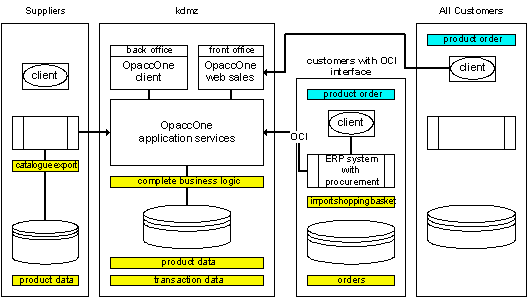
Fig 3.1: Overview of kdmz's integration solution
Business perspective:
Against the backdrop of increased cost pressure and continuing digitalisation, kdmz aimed to identify the options for the simplest and cheapest procurement of office supplies. The redesign of procurement processes [merger] was accompanied by a determination of synergies by merging cantonal department with similar tasks. In this way sponsorships were challenged. Success has been achieved in the integration of decentralised (i.e. housed in the individual departments of Canton of Zürich) publishers of forms and printed matter, print and copy centres and office supplies stores.
Furthermore, optimisation of core processes was targeted. A cultural and organisational change occurred at kdmz following the draft and acceptance of a model and the transformation from function- to process-orientated operation with four main customer-related processes.
- Production / distribution of printed matter, publishing products, communication aids
- Distribution of office supplies and cleaning agents
- Distribution of office machinery, IT and copiers
- IT and organisational consulting
With E-Forms, a wholly new service, founded entirely on the potential of internet-based information technology was established. It saves residents the trouble of picking up and sending in physical forms to their local authority. The accompanying process is described in the following section.
E-Forms represent a considerable labour-saving device for users in government offices since they can always call up the forms they require in the latest version without needing to keep stocks themselves. This gives them access to a far large number of E-Forms than a normal member of the public, who only has a limited range available.
Process view:
Support of procurement processes through a sell-side e-shop
kdmz offers its entire range in an e-shop. The e-shop serves all customers as a platform for the entire procurement process. This gives registered customers the option of customising their ranges, i.e. to create partner-related and personal sub-ranges. All search functions are limited automatically to the customised range.
The release and authorisation process is likewise supported. Users place orders directly. According to the release procedure in place, the orders are presented to those in the organisation responsible for granting releases as stored in the system. Only released orders are processed. Customers can trace their orders using order tracking.
Each ordering organisation can maintain its own master data at all times via a web administration tool.
This integration across organisational boundaries means that the ERP systems of both the buyer and kdmz can be supported in equal measure. A customer can place an order in Enterprise Buyer (SAP purchasing system) and then branch to the kdmz e-shop in a round trip using an OCI interface [Schubert et al. 2002, p. 16] where the shopping basket can be set up. Finally, the positions are automatically entered into the procurer's system and reprocessed for ordering. This dispenses with the previous practice whereby buyers printed out their shopping baskets in the kdmz E-Shop and then recorded it in their own systems manually.
Orders are sent to kdmz as a matter of course, even if articles not on stock are sent to sub-suppliers for direct delivery to the customer in kdmz's name. Accordingly, the bundled customer invoices containing all deliveries are generated by kdmz. The integration of the various ranges represents a service for customers since they can order everything from one company, kdmz.
For customers, the entire order process takes place without media gaps. Invoices are sent to the government office itself or, if desired, to the state exchequer quoting the relevant cost centre. At kdmz, orders are stored in "order lists" that are passed in the form of monthly invoices to the state exchequer for manual input (still). The manual interface has the advantage that in the event of defects, goods returned or complaints, a corresponding reimbursement for the customer can be simply taken into account and billed monthly if required.
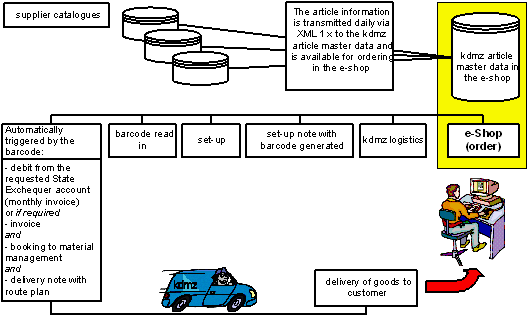
Fig 3.2: Order process without media gaps
Update of catalogue data
kdmz runs a multi-supplier catalogue on its e-shop. Synchronisation with external supplier catalogues is performed via XML. This means that article information (range, price, availability etc.) is always up to date.
E-Forms
Residents of a Zürich authority can obtain forms released by the authority for the public directly from the local authority's website. These forms are assembled by kdmz for the local authority, i.e. the form is printed with the authority's details in the header (identity section) along with its coat of arms, addresses and other information. E-Forms released for citizens are provided for download from the kdmz e-shop by the Opacc Hosting Centre in Kriens, i.e. the download page is opened as a new window within the local authority's website. Citizens do not have to register in the e-shop to do this and, once they have downloaded the forms, can fill them in on a computer, save them and forward them by e-mail. On the software side, all that is needed is the free Adobe Acrobat Reader from Version 5.1. E-Forms have been designed in such a way that the data can be integrated in a database at the local authority if required.
That means citizens no longer have to physically go to the local authority offices, request the form, fill it out by hand, perhaps make a copy of it and then hand in the form to the local authority offices for forwarding to the relevant internal office for processing.
This service is also available to employees at the local authority, enabling them, conversely, to order their e-forms in the kdmz’s "normal" e-shop, also electronically. There they have access to the entire range of E-Forms, although they must first identify themselves in the e-shop with their user ID and password.
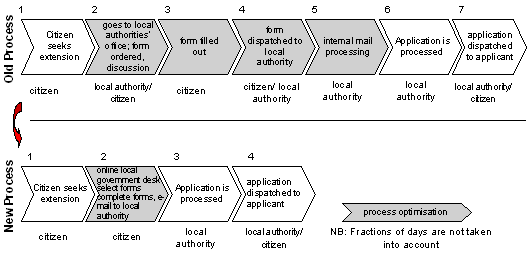
Fig 3.3: E-Form process optimisation
Application view:
The solution presented here does not represent integration in the true sense of the word since the OpaccOne BackOffice (master system) and the OpaccOne FrontOffice (E-Business) systems are from the same software family. As all applications share a common foundation, the OpaccOne Application Server, the set-up can be termed implicit integration.
Only integration of the partner systems is effected by connectors. They are described in more detail in the next section.
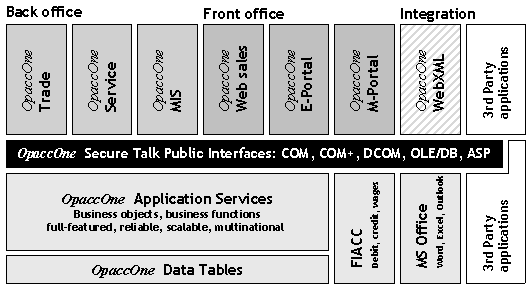
Fig 3.4: Opacc application view
Technical view:
The kdmz OpaccOne BackOffice master system is a comprehensive ERP system that supports all business processes in the four business divisions.
OpaccOne BackOffice (1 DB server to each of the application servers numbers 1 and 2) are run on a kdmz in-house system. The e-business applications described were realised with OpaccOne FrontOffice and are operated at the Opacc Hosting Centre in Kriens.
In this set-up, the back-office and front-office applications do not exchange data but use the same data and functions on the OpaccOne Application Server in real time. This means there is no duplication and obviates the need for synchronisation. The web application is connected to kdmz via ABRAXAS live and direct, i.e. the data in the e-shop always perfectly matches the data in the back office.
OpaccOne support "connectors" for integration into partner systems. They permit various business events with external partners to be processed electronically, e.g. orders from a customer system that are transferred electronically to the OpaccOne order system. The connectors are able to use all OpaccOne's Business Services, which are also the same as those used in the back-office solution. The business events "Catalogue Data Import" and "Round Trip" are currently integrated at kdmz via the connector.
Actual data processing in OpaccOne is specific to Opacc. Data interchange, transmission and conversions, however, are performed using common standardised formats and protocols. In technical terms, XML, HTML, FTP, HTTP are used, and XSLT for conversions. They are all standards recognised by the W3C. This ensures not only in-house integration between back and front offices, but also integration into the systems of value added partners.
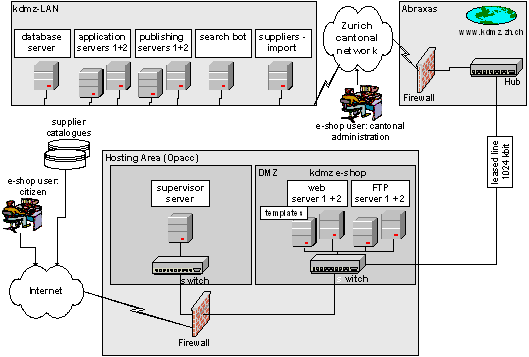
Fig 3.5: Technical system view (kdmz web portal)
4. Operation
Benefits:
Customers especially appreciate the possibility of obtaining all articles from one source, the ability to see the latest information on prices and articles and to activate their orders around the clock without media gaps. Cost savings can be identified in the following areas:
Streamlined order, delivery, invoicing processes result in
- Reduced transaction costs
- Reduced lead times
- Reduction of goods on stock, especially forms (print on demand, E-Forms)
Reduced procurement costs through
- Exploitation of potential for bulk discounts
- Consolidation of supplier base
- Elimination of printing and warehousing costs, especially with E-Forms
- Reduction of processing and postal costs (postage, envelopes etc.)
Administration is simplified through
- No more uncoordinated/unmonitored ordering and warehousing
- No problems with versions/up-to-dateness, especially with E-Forms
Customers are better served and employees relieved of work through
- Expansion of the service portfolio
- Raised customer satisfaction
- Raised flexibility (independence from office hours)
Improved possibilities to control and analyse
- Monthly statistics/evaluations
Profitability:
As outlined by the final project report entitled "Impact-orientated administration management in Canton of Zürich (wif!)" by the Zürich Privy Council on 16th April 2003 and the wif! website (http://www.wif.zh.ch/projektende/index.html):
"... The entire IT solution comprising all processes from the bid to the invoice, which was evaluated and already implemented as part of the project, made a huge contribution to increases in efficiency.
The quantifiable benefit can be expressed in sustainable savings of CHF 2.1 million annually by reducing positions and the space requirements. The cost of the project was CHF 432,000. Allocation of these funds will not be changed for the time being since benchmarking has revealed that kdmz is less expensive to run than private-sector suppliers. The non-quantifiable benefit concerns among others the use of e-commerce for over 500 customer relationships and a gain in staff expertise. ..."
5. Success factors
The noticeable improvement in service quality for kdmz's customers is striking because there is just one e-shop for all requirements and the customers notices no media gaps whatsoever during order processing.
kdmz also manages logistics, meaning that ordered goods can be delivered right to the workplace if required. The customer also no longer needs to be concerned that booking from the cost centre at the state exchequer is correct.
The fact that the back-office system (ERP) and front-office system (E-Business) belong to the same software family means that the operator is spared all expense in integrating them. This is particularly important for customers who would prefer not to have to provide staff resources for such activities. Conceptually, this is the best possible approach with regard to costs and customer benefit. The e-business solution has complete background ERP functionality, benefiting E-Business customers with up-to-date and completely customisable data (ranges, prices, current orders, history etc.).
The solution’s specialities:
- As a customised shop offering, customers only see the range requested or released for them personally and also have the option of determining their own order-numbering rules.
- "Authorisation pools", meaning that orders can be released at one or more superior levels, are supported by the system.
- The kdmz shop can be linked to existing customer websites and adapted in design.
- The back office and front office use a joint application server, i.e. the solution is based on a common foundation.
Changes:
From the point of view of kdmz, work is considerably more efficient and the corporate vision mentioned at the opening can be implemented.
Lessons learned:
From kdmz’s standpoint, this type of e-procurement solution can generally only produce the desired savings potential once a critical procurement volume is reached. The objective must therefore be to win over as many cantonal, municipal and private institutions as possible for a common, standard purchasing solution in order to best exploit the potential of volume rebates and a consolidated supplier based.
The system must be accessible via internet/intranet without the need for installation of local software components and must demonstrate high user comfort both for customers and suppliers.
Finally, much work was invested in the areas of information and communication (conventions, training courses etc.) - both by kdmz and by customers/suppliers - that in hindsight contributed a great deal to the solution's success and its acceptance.

